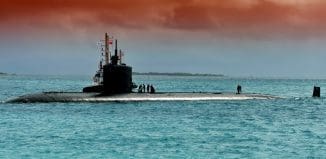Russia Will Upgrade its Fighter Aircraft Based on Operation in Syria
This post is also available in:  עברית (Hebrew)
עברית (Hebrew)
Russia hopes to upgrade its fleet of Sukhoi Su-35C fighters based on experience gained operating in Syria this year.
As with almost all new aircraft, minor but vexing flaws are often discovered during high-intensity real-world operations, according to nationalinterest.org. It’s not surprising that the Russian Air Force discovered minor issues with the Su-35 and the other aircraft that it deployed to Syria. Indeed, such discoveries are typical for all aircraft types in every air force.
The Sukhoi Su-35C will be upgraded in 2017 based on the experience from the combat use in Syria, Deputy Defense Minister Yuri Borisov said during a visit to the Gagarin aircraft plant, tass.com reported.
The deputy defense minister said at first the plane “inhaled” small stones from the runway, so one of the main modifications is to a set of screens in the Su-35’s inlets that are designed to prevent the ingestion of foreign object debris (FOD). The “small stones” could seriously damage the jet’s twin Saturn AL-41F1S engines. But during the combat use, these drawbacks were fixed.
The ministry contracted 10 aircraft annually, which the plant will supply to 2020. “Our pilots, who serve in Syria, say it is one of the best aircraft in the world in the flight technical characteristics, the nomenclature and the range of weapons,” he said. “They believe the aircraft cannot be compared in combat use with any other plane, and thus foreign clients have been considering this aircraft”.
“There is no better stress test for a new aircraft than sustained flight operations,” Mike Kofman, a research scientist at the Center for Naval Analyses specializing in Russian military affairs, told thenationalinterest.org
The Su-35 might also receive some minor tweaks to its avionics hardware and software—particularly those systems pertaining to air-to-ground missions.
Vasily Kashin, a senior fellow at the Center for Comprehensive European and International Studies at Moscow’s Higher School of Economics said: “Since the aircraft was employed for ground strike missions—more with smart weapons and dumb bombs—there can be some modifications to software and systems responsible for ground attack.”
The Russian Air Force is more or less satisfied with the Su-35S, thus there are no immediate plans to upgrade the aircraft with major new systems like an active electronically scanned array (AESA) radar. “They have a very powerful PESA [Passive Electronically Scanned Array] radar and it is considered to be the strong point.”




























